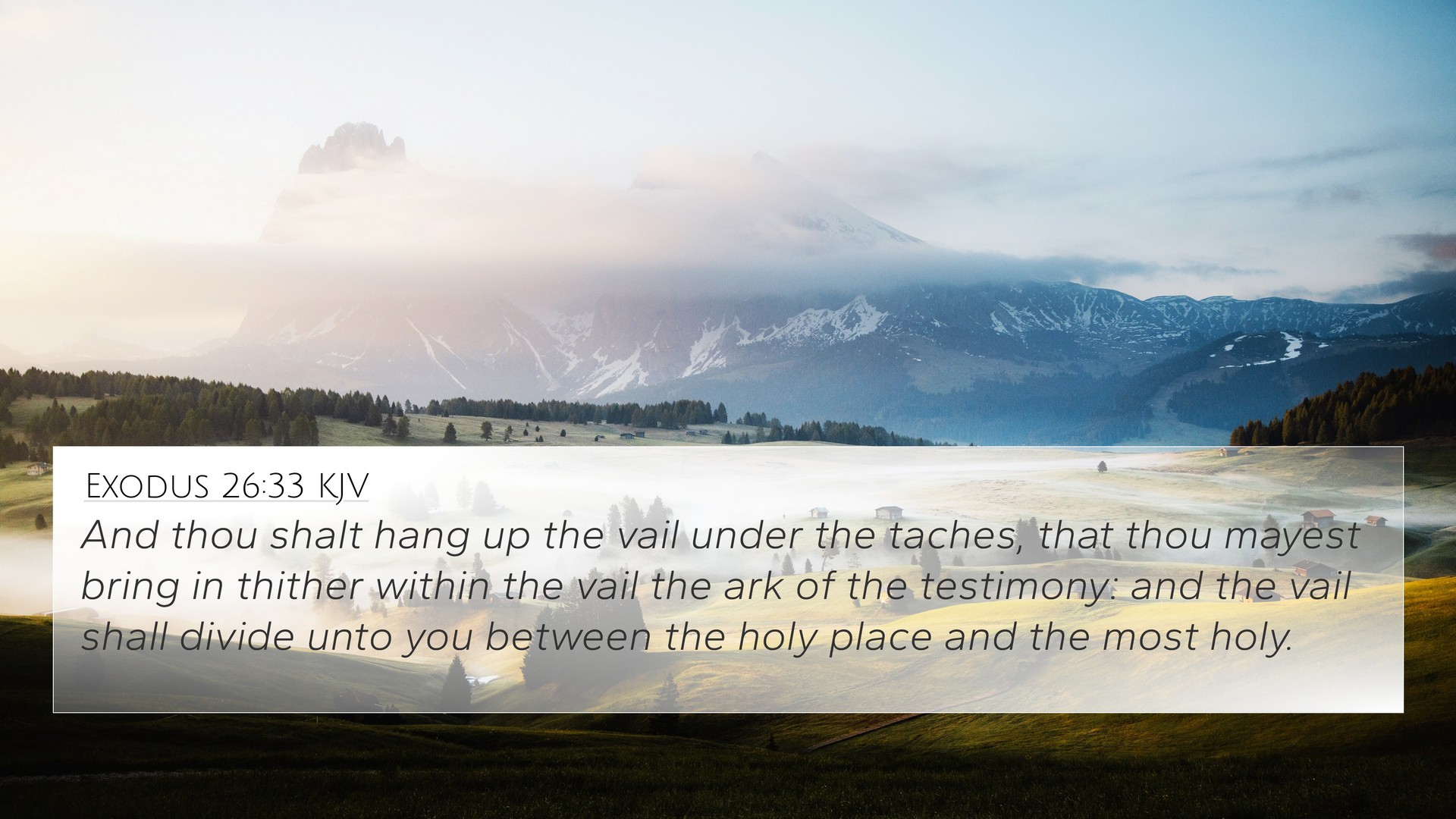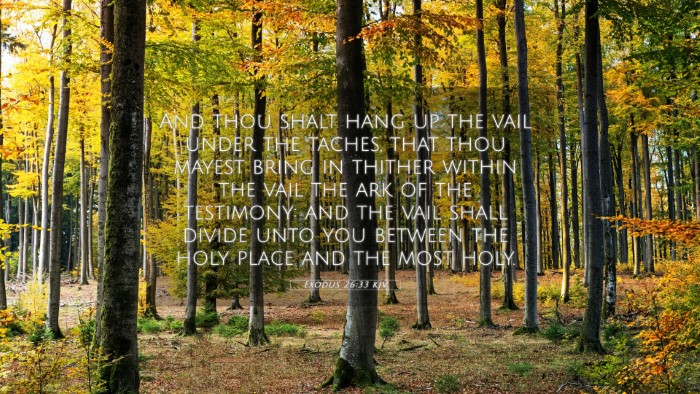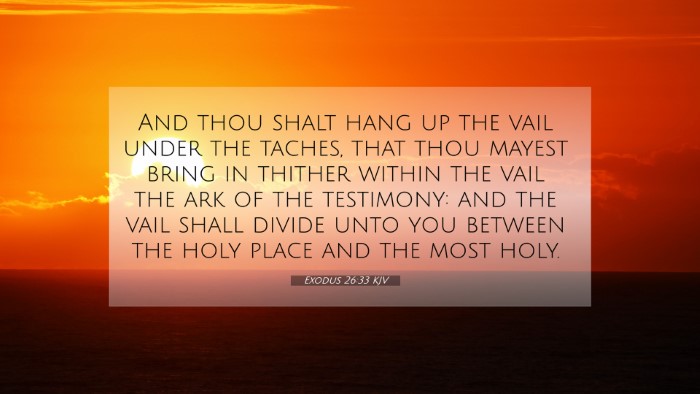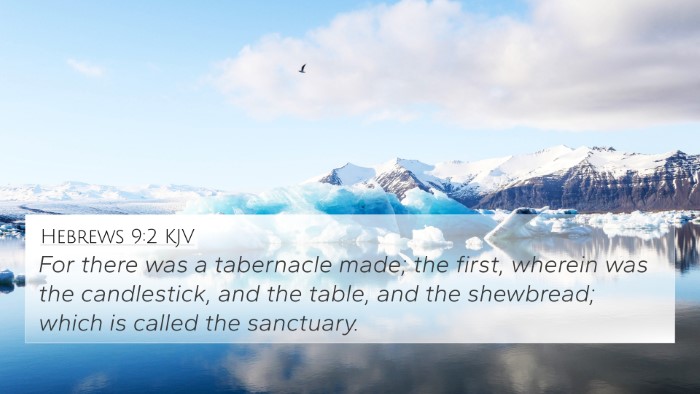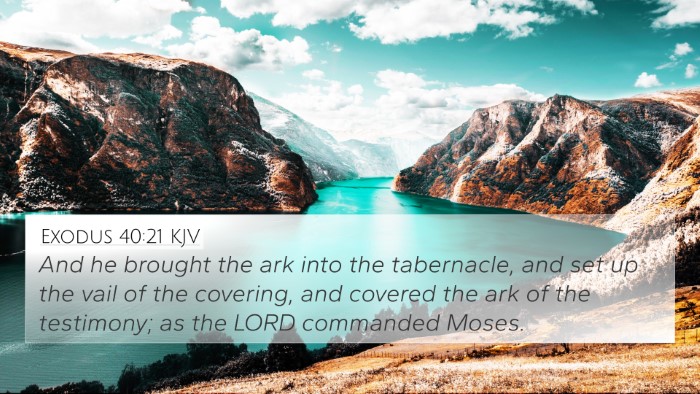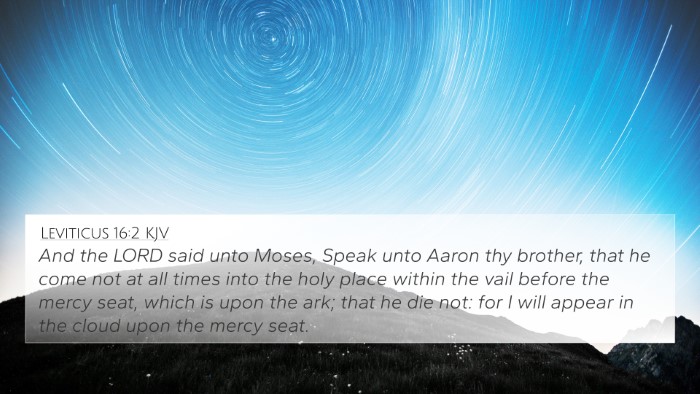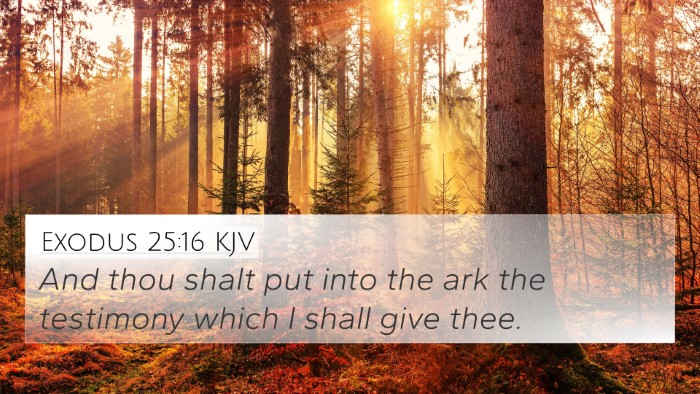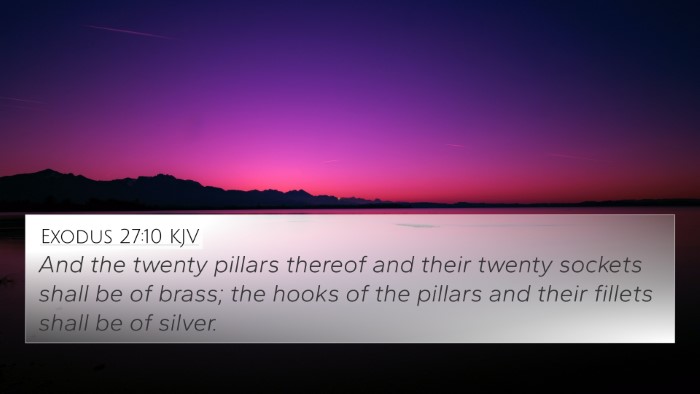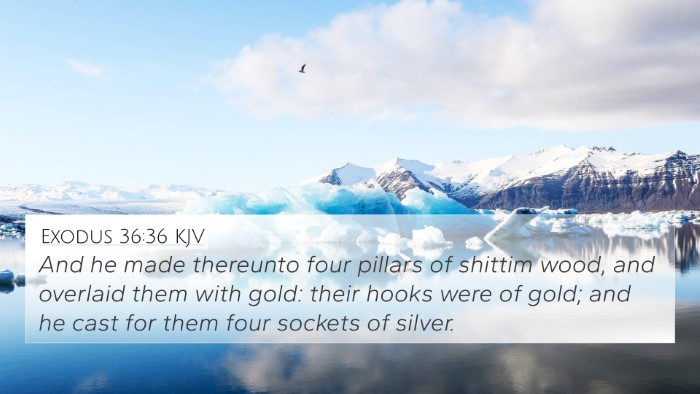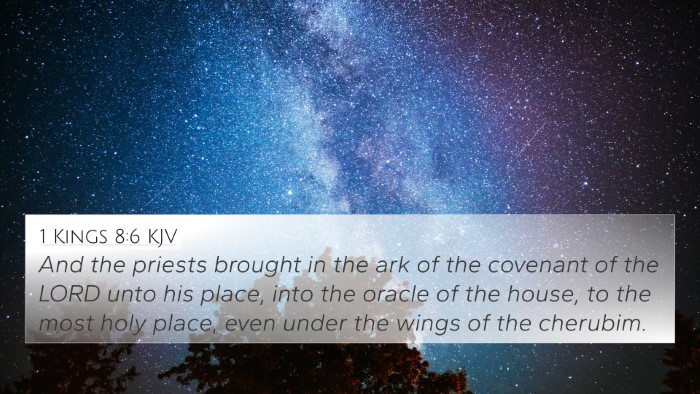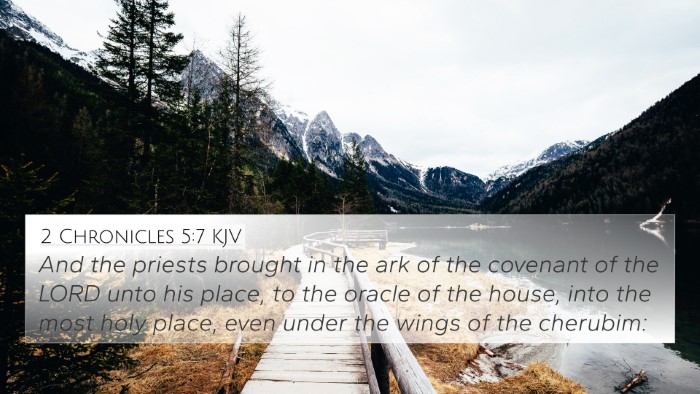Exodus 26:33 - Summary and Commentary
Bible Verse: Exodus 26:33 states, "And thou shalt hang up the vail under the taches, that thou mayest bring in therewithin the ark of the testimony: and the vail shall divide unto you between the holy place and the most holy."
Meaning and Context
This verse is part of the instructions God gave to Moses regarding the construction of the Tabernacle, which served as the portable sanctuary for the Israelites during their journey through the wilderness. The verse highlights the significance of the veil in separating the Holy Place from the Most Holy Place, emphasizing the holiness of God and the need for separation between God and humanity.
Insights from Public Domain Commentaries
-
Matthew Henry:
Henry notes that the veil symbolizes the barrier between God and sinful mankind. He emphasizes that only the high priest could enter the Most Holy Place once a year, thus illustrating the strict separation necessitated by God's holiness. The numerous details surrounding the veil’s construction signify its importance as a means of accessing God’s presence.
-
Albert Barnes:
Barnes highlights that the veil not only separates but also signifies the importance of approaching God with reverence and caution. He points out that this veil represents Jesus Christ himself, who, through His sacrifice, removed the barriers between God and humanity, allowing believers direct access to God.
-
Adam Clarke:
Clarke explains that the materials used for the veil (fine linen, blue, purple, and scarlet) represent royalty and divinity. This suggests that while God is transcendent and holy, He is also intimately involved with His people. The representation of the veil indicates the dual nature of God—both accessible and wholly other.
Cross-References and Connections
Exodus 26:33 connects with several other Bible verses, illustrating the themes of separation, holiness, and access to God:
- Hebrews 9:3-8: Discusses the structure of the tabernacle and the significance of the veil.
- Matthew 27:51: Describes the tearing of the veil at Jesus' death, symbolizing direct access to God.
- Exodus 30:6: Details the placement of the altar before the veil, reinforcing the proximity of sacrifice to God’s presence.
- Leviticus 16:2: Highlights the need for the high priest to enter the Most Holy Place correctly.
- 1 John 1:5: Speaks to God’s nature as light and the separation from darkness, echoing the significance of the veil.
- Revelation 21:3: Foretells the ultimate unity of God with His people, contrasting with the veil's separation.
- 2 Corinthians 3:14-16: Discusses the veil over the hearts of those who do not believe, relating the Old Covenant to the New Covenant.
Theological Implications
Understanding Exodus 26:33 requires recognizing the theological implications tied to the veil's significance. The Old Testament rituals, particularly relating to the tabernacle, highlight humanity's need for a mediator:
- Separation Due to Sin: The veil represents the distance caused by sin between God and humanity.
- Access through Christ: With Jesus as our High Priest, the veil is removed, allowing us to approach God with confidence (Hebrews 4:16).
- Holiness of God: The emphasis on separation underscores the absolute holiness of God, which must be acknowledged in true worship.
Practical Applications for Study
For those studying this verse, consider the following:
- Explore the relationship between the Old and New Testament concerning holiness and access to God.
- Utilize a Bible concordance to find related scriptures that expand on the theme of divine separation and reconciliation.
- Engage in cross-reference Bible study methods to identify parallels between the practices of ancient worship and New Testament teachings.
Conclusion
Exodus 26:33 serves as a profound reminder of the holiness of God and the separation that sin causes, while simultaneously pointing forward to the perfect access and relationship believers now have through Jesus Christ. In studying this verse, one can explore the intricate connections throughout Scripture that reveal the cohesive narrative of God’s redemptive plan.
